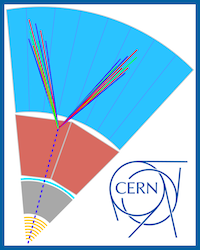Speaker
Description
Future e$^+$e$^-$ colliders, with their clean environment and triggerless operation, offer a unique opportunity to search for long-lived particles (LLPs). Considered in this contribution are prospects for LLP searches with the International Large Detector (ILD) providing almost continuous tracking in a Time Projection Chamber (TPC) as the core of its tracking systems. The ILD has been developed as a detector concept for the ILC, but is also applicable to other Higgs Factory options.
The considered signature for neutral LLP production is a highly displaced decay vertex, which we inclusively search for in the TPC. Based on the full detector simulation, we study decays of both light and heavy LLPs. For the heavy, $\mathcal{O}$(100 GeV) LLPs, the most challenging scenarios are those with a small mass splitting between LLP and a dark matter candidate, resulting in only a very soft displaced track pair in the final state, not pointing to the interaction point. As the opposite extreme scenario we consider the production of a light, $\mathcal{O}$(1 GeV) pseudoscalar LLP, which decays to two highly boosted and almost colinear displaced tracks. Backgrounds both from soft beam-induced processes and hard physical events are taken into account. Different tracking system design options and their impact on the LLP reconstruction are discussed.
Assuming a single displaced vertex signature, the limits on signal production cross-section are presented for a wide range of LLP lifetimes and a set of masses or mass splittings. These limits are to a large extent model-independent, reflecting kinematic properties of the considered signature. They can be used to set limits on particular models, also for more complex signatures involving displaced vertices.
